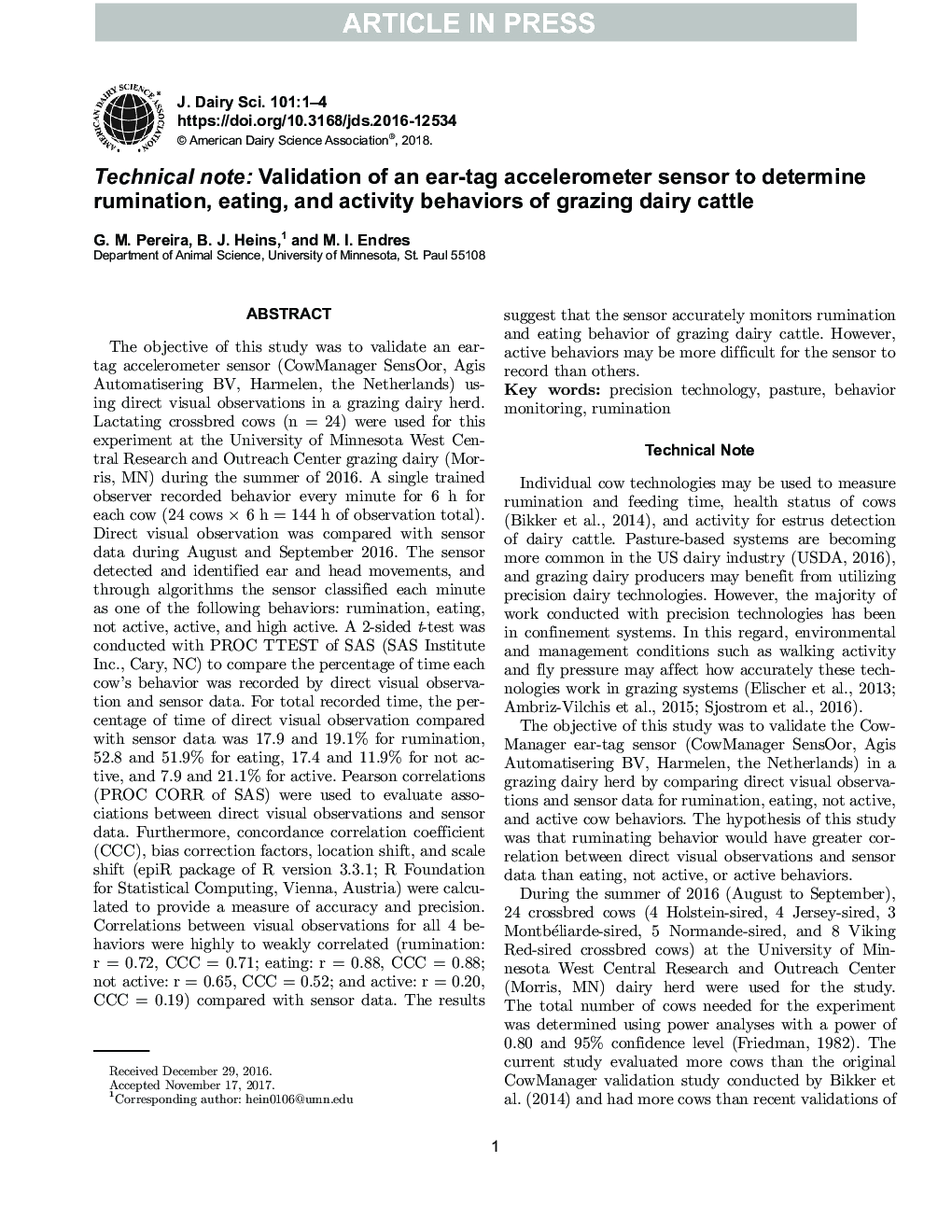| Article ID | Journal | Published Year | Pages | File Type |
|---|---|---|---|---|
| 8501460 | Journal of Dairy Science | 2018 | 4 Pages |
Abstract
The objective of this study was to validate an ear-tag accelerometer sensor (CowManager SensOor, Agis Automatisering BV, Harmelen, the Netherlands) using direct visual observations in a grazing dairy herd. Lactating crossbred cows (n = 24) were used for this experiment at the University of Minnesota West Central Research and Outreach Center grazing dairy (Morris, MN) during the summer of 2016. A single trained observer recorded behavior every minute for 6 h for each cow (24 cows à 6 h = 144 h of observation total). Direct visual observation was compared with sensor data during August and September 2016. The sensor detected and identified ear and head movements, and through algorithms the sensor classified each minute as one of the following behaviors: rumination, eating, not active, active, and high active. A 2-sided t-test was conducted with PROC TTEST of SAS (SAS Institute Inc., Cary, NC) to compare the percentage of time each cow's behavior was recorded by direct visual observation and sensor data. For total recorded time, the percentage of time of direct visual observation compared with sensor data was 17.9 and 19.1% for rumination, 52.8 and 51.9% for eating, 17.4 and 11.9% for not active, and 7.9 and 21.1% for active. Pearson correlations (PROC CORR of SAS) were used to evaluate associations between direct visual observations and sensor data. Furthermore, concordance correlation coefficient (CCC), bias correction factors, location shift, and scale shift (epiR package of R version 3.3.1; R Foundation for Statistical Computing, Vienna, Austria) were calculated to provide a measure of accuracy and precision. Correlations between visual observations for all 4 behaviors were highly to weakly correlated (rumination: r = 0.72, CCC = 0.71; eating: r = 0.88, CCC = 0.88; not active: r = 0.65, CCC = 0.52; and active: r = 0.20, CCC = 0.19) compared with sensor data. The results suggest that the sensor accurately monitors rumination and eating behavior of grazing dairy cattle. However, active behaviors may be more difficult for the sensor to record than others.
Keywords
Related Topics
Life Sciences
Agricultural and Biological Sciences
Animal Science and Zoology
Authors
G.M. Pereira, B.J. Heins, M.I. Endres,
